New products at Crocus
by Sarah - June 18th, 2009.Filed under: Crocus, New Products.
New lines today at Crocus
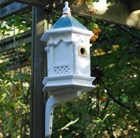
gothic-nest-box £38.99
Superbly constructed from high-quality timber by skilled craftsmen, this beautifully designed nest box will enhance any garden and attract many different species of birds into your garden for breeding. The woodwork is finished in white, with a verdigris copper roof.Other features include: Made using FSC (Forest Stewardship Council) wood 40cm high x 23cm wide
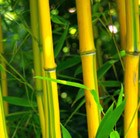
showy yellow-groove bamboo £16.99
Position: full sun or partial shadeSoil: humus-rich, moist, well-drained soilRate of growth: averageLeaves: narrow, mid-greenCanes: green-grooved, golden-yellow turning bright red in sunlightHardiness: fully hardyTall bamboo with green-grooved, golden-yellow canes, which can flash with shades of red in the sun, fading to darker yellow with age. This colourful variety looks great alongside the ebony-black canes of the black bamboo, Phyllostachys nigra. This aptly named coloured-stemmed bamboo is one of our 'highly recommended plants'. Garden care: Plant in a large container or surround the roots with a non-perishable barrier that restricts the plant's spread.
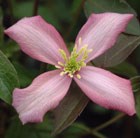
clematis (group 1) £9.99
Position: full sun or partial shadeSoil: fertile, well-drained soil, neutral soilRate of growth: average to fastFlowering period: May to JuneFlower colour: pinkHardiness: fully hardyA vigorous clematis that is suitable for training through an established tree or large shrub. The lightly scented, pale to dar rose-pink flowers, emerge in late spring and early summer and are followed by silky seed heads. The foliage has dark bronze or red tints.Garden care: No routine pruning is necessary. If the spread of the plant needs to be restricted prune immediately after flowering, cutting back overlong shoots to healthy buds. Apply a slow-release balanced fertiliser and a mulch of well-rotted garden compost around the base of the plant in early spring.
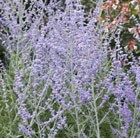
Russian sage £8.99
Position: full sunSoil: well-drained, poor to moderately fertileRate of growth: average Flowering period: August and SeptemberHardiness: fully hardyWith its aromatic leaves and upright spikes of violet-blue flowers, Russian sage makes a wonderful companion to all kinds of late-summer ornamental grasses and perennials. In August and September, tiny, violet-blue, tubular flowers appear on silver-grey spikes above the main framework of the plant, among deeply-cut and lobed, grey-green leaves. This deciduous sub-shrub makes a real impact planted en masse alongside a path, where the sage-like fragrance of its leaves can be appreciated, or try it alongside other silver-leaved plants, or in swathes in a sunny border. One of our recommended plants, it copes well with dry, chalky soil and salt-laden air.Garden care: As this shrub has a tendancy to flop a little, in March cut back to the permanent framework of the shrub to promote bushier growth. After pruning apply a generous 5-7cm (2-3in) mulch of well-rotted garden compost or manure around the base of the plant.
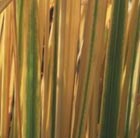
switch grass £7.99
Position: full sunSoil: moderately fertile, well-drained soilRate of growth: average Flowering period: August and SeptemberHardiness: fully hardyA recent introduction, this is a deciduous, fountain-like grass with red-tinted, green foliage, enhanced by sprays of pinkish flowers in July which form an airy cloud above the foliage. It's great for adding vertical interest and movement to a planting scheme, especially in autumn, when the foliage deepens to red-purple. The flower spikes gradually fade to buff as they mature and can last well into winter, prolonging the season of interest in the garden.Garden care: Cut down to the ground in late winter. Lift and divide congested colonies betwen mid spring and summer. Goes well with: Allium sphaerocephalon, Monarda 'Aquarius', Sedum 'Herbstfreude', Achillea millefolium 'Cerise Queen', Stipa tenuissima, Verbena bonariensis
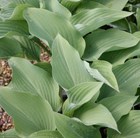
plantain lily £6.99
Position: partial or full shade Soil: fertile, moist, well-drained soilRate of growth: average to fast-growingFlowering period: July and August Hardiness: fully hardyThis hosta is instantly recognisable for its upright, twisted, blue-green leaves with a quilted appearance, and tall spikes of pale lilac, bell-shaped flowers in July and August. The boldly corrugated leaves of this hosta make a bold statement in a large, well-drained, terracotta or stone container. In the garden, it is shown off to best advantage among other foliage plants, such as ferns. It needs shelter from cold, drying winds.Garden care: You'll get thicker, lusher leaves if you give your hostas a really good feed. An annual mulch in spring or autumn will help to keep the weeds down and is an easy way to improve soil and boost nutrient levels. Add a generous mulch of about 5-10cm (2-4in) deep of garden compost or leaf mould around the plant. Spraying the leaves regularly with a high nitrogen fertiliser during the growing season will also help to boost leaf size. Slugs and snails love hostas, so you will need to protect against them. Use an organic nematode treatment in early spring to ward off slugs. Or simply stick to a container.Water your hostas well as soon as you plant them and from then on water regularly during their first growing season. Give them a water about once or twice a week around the base of the plant, avoiding the leaves. Little and often can be disatrous as it encourages the plant to produce roots closer to the surface in a desperate quest for moisture.
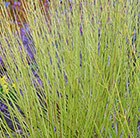
golden twig dogwood £6.99
Position: full sun to part shadeSoil: any moderately fertile, reliably moist soilRate of growth: fast-growingFlowering Period: May and JuneOther Features:the flowersare followed by white, often blue-tinged fruit; the fruits may cause a mildstomach ache if ingestedHardiness: fully hardyClusters of white flowers in May and June and oval, dark green leaves, which redden in autumn and fall to reveal bright, yellow-olive winter stems. The stems of this dogwood look stunning planted alongside salmon-pink and red-stemmed varieties. An excellent specimen plant for sunny, moist areas of the garden. It's particularly effective near water.Garden care: In March cut the stems back hard to within 5-8cm from the ground and apply a generous 5-7cm mulch of well-rotted garden compost or horse manure around the base of the plant. Where border space is limited restrict the spread of the plant by removing one in four of the stems each year.
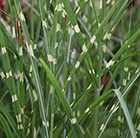
zebra grass £6.99
Position: full sunSoil: fertile, moist, well drained or sandyRate of growth: averageFlowering period: August to SeptemberHardiness: fully hardyA graceful, fountainous grass that takes its name from the, horizontal cream bands on the leaves. Striking, silky, finger-like flowers bloom in late summer, and stay for months, giving this plant dramatic winter presence. Use as a specimen, or in small groups at the back of a perennial border.Garden care: Cut down to the ground in late winter before the new foliage appears.
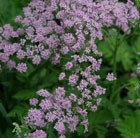
hairy chervil £6.99
Position: full sun or partial shadeSoil: moist, fertile soilRate of growth: averageFlowering period: April-JuneFlower colour: pinkOther features: great in a woodland settingHardiness: fully hardyUmbeliferous plants (ones that produce flowers that radiate from the top of a single stem and look like giant starbursts) are really in demand now, and this is one of the best. The clusters of soft pink flowers appear in late spring and early summer and top the spreading mounds of deeply divided foliage, which has a distict fern-like appearance. The leaves are slightly hairy, have a delicious, apple scent and are sometimes flushed with purple. In the wild, the species can be found in hedgerows, open woodland and meadows from Spain to Russia.Garden care: Cut back tatty foliage to neaten it up and apply a generous layer of mulch around the roots in the autumn.
butterfly bush £6.99
common box £6.99
horned violet £5.99
French lavender £5.99
bistorta £5.99
lady's mantle £5.99
bugle £5.49
black mondo £4.99
Jacobs ladder £4.99
Lady's mantle £3.99






